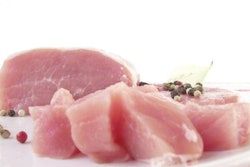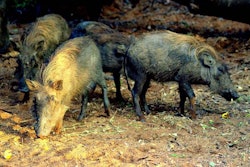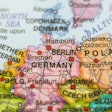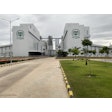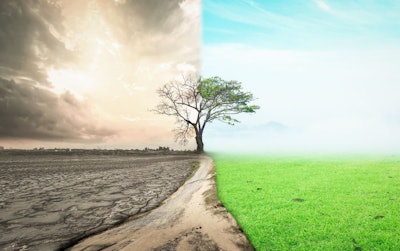
In its latest step to reduce the environmental impacts of agriculture, the Irish government has published a set of practical measures for different parts of the sector.
Worldwide, we need to increase production of food and fiber while reducing greenhouse gas (GHG) emissions, building resilience, and adapting to the effects of climate change.
In the Republic of Ireland, the Department of Agriculture, Food and the Marine (DAFM) has published a “roadmap” designed to help all agrifood stakeholders tackle these issues.
After consultation with industry, scientists, policymakers, farmers and environmentalists, DAFM had released “Ag Climatise: a roadmap towards climate neutrality.” It includes 20 action points that can be applied straightaway.
Also set out are nine additional measures that require further research and/or innovation before they are ready to be applied in practice.
Together, these aim to keep the Irish Republic at the forefront of the world’s sustainable food production systems, according to DAFM.
Key actions for the livestock feed sector
In the Roadmap, DAFM sets out three actions specifically for the animal feed industry.
First of these is to reduce crude protein levels in feeds. Excessive protein not only makes diets more expensive, it also adds to the burden on the environment in the form of ammonia from manure and urine. As a result, DAFM has proposed that average crude protein in pig diets is no higher than 16%. For grazing ruminants, feeds should contain a maximum of 15% crude protein. Furthermore, feed manufacturers are urged to make greater use of home-grown grains and protein crops – a feature that should be included on the labeling, DAFM suggests.
Second, DAFM will continue its support for research into methane reduction. Whether through formulation changes or feed additives, the feed industry is encouraged to make maximum use of all approved means to minimize the production of this most environmentally harmful GHG by livestock.
Finally, according to DAFM, Ireland is overly reliant on imports of feed ingredients. One obvious solution is for feed manufacturers to use more native grains and legumes. By creating higher demand for these materials, they will contribute to the circularity of Irish agriculture, and hence to its sustainability credentials.
Background to the Roadmap
As a member of the European Union, Ireland is committed to achieving a climate-neutral economy by the end of 2050. Emissions reduction targets are in line with the goals of the Paris Agreement, and guided by the EU Climate and Energy Framework.
Also covered by the Irish government in the recently passed Climate Action Amendment Bill, the goals will balance emissions and removals by the deadline. As the nation faces the challenges of meeting its climate change and air quality targets — as well and those on biodiversity and water quality — DAFM stresses that all sectors of the economy need to engage and play their part.
Ireland’s agrifood sector is the nation’s leading source of emissions, accounting for 35% of the total. However, together with forestry, agriculture also has the capability to deliver renewable energy, and to sequester carbon from the atmosphere. The sector already generates 99% of the country’s total ammonia emissions. Forecast increases in dairy cow numbers will likely drive emissions even higher.
Priorities for the ag sector
After examining these key characteristics of Irish agriculture, and in consultation with stakeholders, DAFM has identified six tasks that will help the country achieve its environmental objectives. At the same time, they aim to maintain viable farm incomes.
First priorities for reducing overall GHG emissions were identified as methane from gut fermentation, and nitrous oxide. DAFM identified these GHGs as the main emissions by agriculture. Also important for the livestock sector, it said, is achievement of ammonia reduction targets.
For other agrifood sectors, key areas are to increase carbon sequestration and storage, as well as to improve water quality and biodiversity by reducing nutrient losses to the natural environment.
Generally, DAFM acknowledges the need to build resilience into Ireland’s food production and land management systems. Finally, it highlights the importance of communicating the progress made towards these targets.
Launch of the Roadmap
Introducing the Ag Climatise report, the Minister for Agriculture, Food and the Marine urged the sector to start taking action.
“Irish agriculture has a strong reputation for the safety and environmental sustainability of its produce, and this roadmap challenges us to build on this reputation,” said Charlie McConalogue T.D. “We need to start doing this today, and it is with this firmly in mind that I am publishing this roadmap now,” he said.
For Minister of State in DAFM, Sen. Pippa Hackett, the Roadmap sets out some ambitious actions.
“Greenhouse gas and ammonia emissions from the sector have been going in the wrong direction,” she said. “We need a clear pathway to reverse this trend, and this Roadmap sets us on that path.”
For Minister of State in DAFM, Martin Heydon T.D., it was significant that agriculture is the first sector to produce a detailed plan to reduce its climatic impact.
“This Roadmap provides the needed platform to increase our focus on environmental sustainability, and to explore new developments with the farmer at the center of our plans,” he said.
Support for Ireland’s farmers
The nation’s farmers are already committed to reducing emissions, according to Irish Farmers’ Association (IFA) President Tim Cullinan.
To achieve emission reduction, he called for farmers to receive support. This is needed to adopt mitigation measures, and technologies to improve farm productivity and efficiency.
According to Cullinan, farmers should not be pressured to reduce their herd sizes as a means of reducing emissions.
Furthermore, he said a different method is needed to measure methane production. And finally, to improve understanding of GHG emissions from farms, Cullinan called for more account to be taken of carbon stored in soils, pastures and hedgerows.



